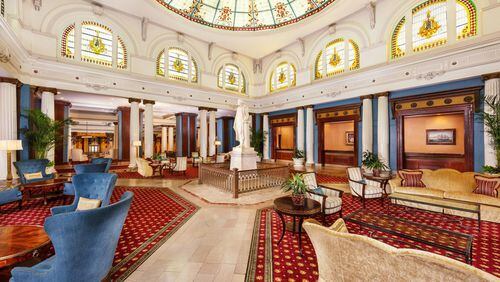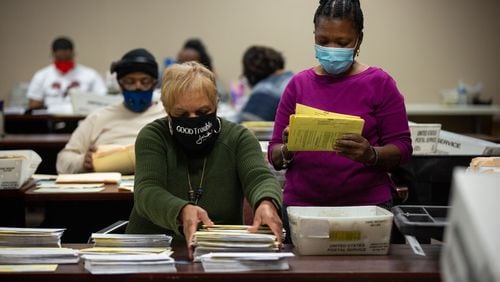With the possible exceptions of Boston and Philadelphia, there is no American city that has quite the history of Richmond. From a capstone of the colonies to the capital of the Confederacy, Richmond was front and center in the early days of our nation’s journey.
Beginning with St. John’s Church, where in 1776 Patrick Henry issued his ultimatum, “Give me liberty or give me death,” visitors can tour 10 historic sites on the Road to Revolution Heritage Trail.
Fast forward nearly a century, and you will be at the epicenter of the War Between the States. The best place to get a true understanding of this tragic period in the country’s history is at the American Civil War Museum. In addition to the exhibits, the building itself is noteworthy, having once been part of the Tredegar Iron Works, the industrial engine that fueled the Confederate war machine.
Richmond is more than a living history museum, however, and on this visit, I decided to focus on its current vibrant scene.
But I couldn’t resist another drive down Monument Avenue, the only street in America to be on the National Register of Historic Places. In light of recent events in many Southern cities, Monument Avenue might well be on its way to becoming an avenue without monuments.
Five of the six monuments honor sons of the South: Robert E. Lee, Jefferson Davis, Stonewall Jackson, Jeb Stuart and the lesser known Matthew Fontaine Maury, a Confederate naval officer and oceanographer dubbed the “Pathfinder of the Seas.” Before the Civil War, he was America’s most decorated civilian.
The sixth statue is a stone likeness of Richmond native Arthur Ashe, the first black man to win a tennis Grand Slam event (Wimbledon, the U.S. Open and the Australian Open). It depicts Ashe surrounded by four children, a tennis racket in his left hand and a book in his right, emphasizing his belief in the importance of both sports and education.
As has happened in other cities, Richmond’s African-American mayor, 36-year-old Levar Stoney, has appointed a commission to study the feasibility of moving the five Civil War statues to a less prominent location.
Regardless of whether or not Richmond keeps the old, its newest monument is not likely to stir controversy. Unveiled in July, it honors Maggie Walker, the first black woman to charter a bank.
From the past — statues carved in stone — to the present — merrymakers of flesh and blood — is just a short drive to the quirky, ever-changing Carytown District. The area is home to 230 shops, restaurants and small businesses — as well as colorful characters who appear to have been transported straight from New Orleans’ French Quarter or Key West’s Mallory Square.
Check out works by local artists, taste craft brews, take in a classic film at the Byrd Theater (in operation since 1928), check out one-of-a-kind shops or book a spot on one of River City Food Tours’ culinary excursions.
For a good introduction to Richmond, hop aboard the RVA Trolley Landmark Tour, taking in some of the city’s most interesting sites. You’ll pass the Hippodrome, a favorite performing venue of Ella Fitzgerald; the statue of native son, tap dancer Bill “Bojangles” Robinson, located in the square bearing his name, and some of the 105 colorful murals in the downtown area.
You’ll see the 19th century brick house owned by former Chief Justice of the Supreme Court John Marshall (open to the public on weekends), and the former home of John Wickham, now a museum noted for its decorative arts.
Wickham is a footnote in history, having been the lead attorney for Aaron Burr, who may have escaped punishment after his notorious duel with Alexander Hamilton, but was tried for treason here in 1807.
You’ll see the modest house that is now the Edgar Allan Poe Museum (odd, in that while Poe grew up in Richmond, he had no connection to the house), and you’ll see Libby Hill Park with its collection of magnificent Greek Revival mansions.
A must-see while in Richmond is the Virginia Museum of Fine Arts, ranked one of the top 10 comprehensive art museums in the U.S. Its permanent collection runs the gamut from European, African and Asian art to American art. There are galleries devoted to Art Nouveau, Art Deco and Modern and Contemporary Art.
Other galleries showcase 18th and 19th century English silver and the Pratt Faberge Collection (the largest collection of Faberge eggs outside of Russia). Unless you’re taking in a special exhibition, entrance to the museum is free.
Art of a different kind is on display at the Lewis Ginter Botanical Garden, a 50-acre paradise routinely voted one of America’s best botanical gardens. Now through Oct. 1, you can experience Wild Art: A Journey Off Canvas, where regional artists intermingle art and nature in exhibits such as Earth Healer, depicting a female figure of sod and earth, sprouting healing herbs from her arms.
You have until Oct. 15 to take in the Garden’s companion exhibit “Butterflies Live!” in the glass-domed conservatory.
However, you’ll have to wait until spring of 2018 for Richmond’s newest arts institution, the Institute for Contemporary Art, which will be located on the campus of Virginia Commonwealth University and will feature four galleries of rotating art.
The city’s restaurant scene, like that across much of the United States, has experienced an upsurge in recent years. From local favorites such as Laura Lee’s (the fried chicken sandwich with pickles is a favorite) and Max’s on Broad (the truffled deviled eggs and curried chicken salad are to die for) to Lemaire, an elegant space in the Jefferson Hotel, epicures will not be disappointed.
Two of my favorite places turned out to be polar opposites, both in ambiance and culinary offerings.
If the TV series “Happy Days” was set in a Jewish deli rather than a malt shop, you would get a sense of Perly’s Restaurant & Delicatessen. Think jukebox blaring “Great Balls of Fire” and a breakfast menu heavy with blintzes and babkas (coffee cakes made with sweet yeast dough and peppered with raisins and nuts).
The current “it” spot, Shagbark, attracts a hip, trendy crowd who look their best silhouetted against cool blue walls and warm native wood (Shagbark is a type of hickory tree found along the banks of the James River), high ceilings and low lighting. But don’t think Shagbark is all style and no substance.
Chef Walter Bundy, formerly of the aforementioned Lemaire, has crafted a menu described as New American fare with a Southern twist. That means starters such as Chincoteague Clam Chowder with fingerling potato confit, bacon and baby dill; mains such as Eastern Shore Seafood Bouillabaise (a tasty melange of clams, mussels, shrimp, white hominy, charred red onion and coriander aioli), and desserts featuring Chocolate Croissant Bread Pudding and Up-South Peanut Butter Pie.
If you are looking for a hotel with character and class, book a room at the Jefferson, a Richmond landmark since 1895. Although it recently underwent a massive renovation, changing all the rooms into suites, it has retained its Beaux Arts splendor. Guests marvel at the statue of Thomas Jefferson himself under the lobby’s stained glass rotunda, the stately columns, glittering chandeliers and sweeping grand staircase.
The Jefferson is a historic hotel befitting a historic city.
IF YOU GO
THINGS TO DO
RVA Trolley Landmark Tour. 1301 E. Cary St., Richmond. 804-971-2685, rvatrolley.biz.
Virginia Museum of Fine Arts. 200 N. Blvd., Richmond. 804-340-1400, vmfa.museum.
Lewis Ginter Botanical Garden. 1800 Lakeside Ave., Richmond. 804-262-9887, www.lewisginter.org.
STAY
Jefferson. 101 West Franklin St., Richmond. 888-918-1895, www.jeffersonhotel.com.
EAT
Perly's Restaurant & Delicatessen. 111 E. Grace St., Richmond. 804-912-1560, www.perlysrichmond.com.
Shagbark. 4901 Libbie Mill E. Blvd. Suite 175, Richmond. 804-358-7424, www.shagbarkrva.com.






